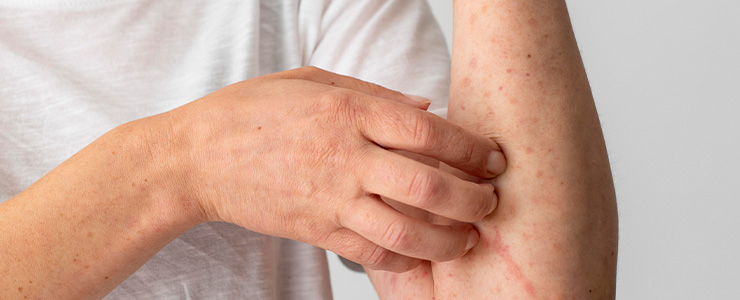Did you know that 25% of people have an infection on their skin without any signs or symptoms? Imagine you have a tiny boil on your arm that you think will go away. But a week has passed and it is still there. The reason could be a common skin infection caused by staphylococcus or “staph” bacteria, aptly known as staph infection.
What is a staph infection?
When a wound or cut gets infected with staph bacteria, it leads to this infection. Individuals who have weak immune systems are likely to develop this condition. Look out for signs like redness, swelling, and tenderness in the affected area to identify it.
How severe can a staph infection be?
The severity of staph infection on skin can range from boils that can be treated quickly to a more serious flesh-eating version of the infection. The latter is often accompanied by fever and chills. Some infections even resist antibiotics, posing more significant challenges. Due to these factors, staph infections on skin are some of the most common types that afflict the general population.
Understanding its progression is essential to charting a treatment plan. It can start as a boil or blister and escalate to a painful rash, oozing, crusting, and symptoms like fever and chills.
Different Types of Staph Infection Symptoms:
-
Boils
are the most common kind of infection
-
Impetigo
is contagious and can be identified with painful rashes and blisters.
-
Cellulitis
affects deeper skin layers, causing redness and swelling, often treated with antibiotics.
-
Staphylococcal scalded skin syndrome
is marked by fever, chills, rash, and blisters.
Staph Infection Treatments
Generally, staph infection treatment involves a variety of antibiotics. The prescription might depend on the symptoms and observations of the medical professional you consult. However, if the infection is severe and resistant to treatment, then surgery might be necessary.
Consulting a dermatologist is wise if you suspect a rash or blister might be a staph infection. They can accurately diagnose and recommend suitable treatment, ensuring effective management of your condition.
Remember that your body’s reaction to medication may differ from others. In case you experience any side effects, inform your doctor immediately. Discuss the matter with them, evaluate your options, and determine a suitable treatment plan.
FAQs
While staph infections on skin are contagious, those that cause food poisoning aren’t.
If there are swollen areas with signs of reddening, there is a high probability it is a staph infection. The swollen area might also feel warm and painful. Another sign is that the sores associated with this infection will contain pus. But, the best and most apt method of identification is done by your local dermatologist, who will test the pus fluid or cells from the infected area to identify the true cause.
There are several antibiotics that are commonly used to treat staph infection, like Vancomycin. Treatment in more severe cases can also involve invasive procedures like wound drainage. Essentially, it’s best to discuss with your doctor on the best course of treatment based on the degree of advancement of the staph infection on skin.














